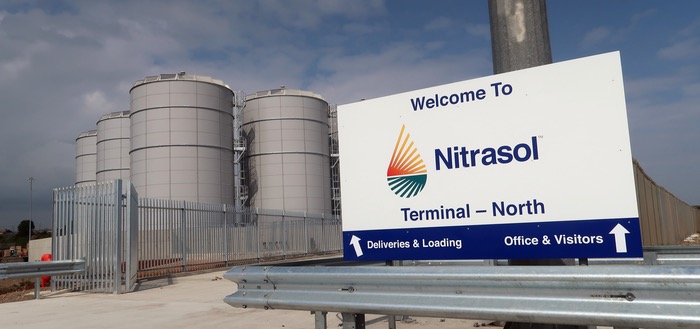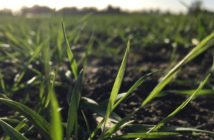Completion of Europe’s largest liquid fertiliser terminal in the north-east of England plus a strategic joint venture with a major global manufacturer will greatly improve the security of supply of liquid nitrogen fertiliser imports into the UK, according to independent fertiliser producer Brineflow.
Managing director Ian Ferris says these advances will enable Brineflow to access new sources of liquid nitrogen fertiliser (UAN) and store large quantities of the material.
This will reduce exposure to the turmoil that has engulfed the fertiliser market since Russia’s invasion of Ukraine, giving farmers confidence in a challenging market.
“The UK is very restricted in terms of nitrates production due to the high cost of natural gas,” says Mr Ferris. “We have seen domestic production reduce significantly over the past 18 months.
“Added to that, a large percentage of imports has traditionally been shipped from countries that were feeding directly and indirectly off Russian gas, chiefly Russia itself, several Baltic states and nearby Western Europe.
“We can now access new deep-ocean primary suppliers in the Americas and beyond, away from Putin’s gas and European competition, and we can hold huge stocks of UAN, the base material for our Nitrasol liquid fertiliser products.
“We will be able to supply these products on demand to growers across at least 90% of the UK’s key arable areas, even when markets are in turmoil.”
Deep-water terminal
Brineflow has just finished phase two of Nitrasol Terminal North, its purpose-built deep-water liquid fertiliser import facility in Sunderland. This has tripled the capacity of the site, boosting quayside storage to 35,000t and annual production to 125,000t.
Together with Brineflow’s other terminal in Great Yarmouth, the expansion takes the company’s total portside storage capacity to 65,000t and increases annual production to 250,000t.
“The Sunderland terminal has given us the ability to ship large trans-Atlantic vessels,” says Ian. “We can now receive tankers up that can carry over 30,000t of product.”
The terminal is designed to the latest EU Eurocodes standards. It uses large diameter low-friction, energy-efficient pipes through which ships can discharge over 1000t of product per hour directly to the quayside storage tanks.
This enables vessels to perform a quick and efficient operation, minimising the time spent in port, which is attractive to ship owners.
Joint venture
A recent joint venture with global chemical and fertiliser producer HELM AG adds a further layer of security to Brineflow’s supply network.
The Hamburg-based company manages and markets 1.8 million tonnes of UAN annually from its own production facility in Trinidad and Tobago.
The new agreement formalises a 40-year working relationship, bringing together HELM’s expertise on the strategic production and supply of UAN and Brineflow’s experience of terminal operations, blending and the commercial management of the UK market.
“We wanted a strong partner who complemented our approach to business and values whilst bringing us closer to the production of UAN, our main liquid fertiliser ingredient,” says Mr Ferris.
“This move really helps to bring large vessels to our doorstep in the UK, providing us with the increased capacity we require as our business grows.
“Farmers increasingly appreciate the substantial productivity and operational efficiencies that our Nitrasol products offer. Sales are growing significantly year on year, so security of supply has become increasingly important.
“Brineflow and HELM will combine the shipment of large vessels from deep ocean producers with the flexibility to supply smaller vessels from the Continent and Baltic region, competitively bringing security of supply to UK farmers.”




